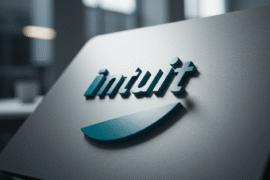This article may contain references to products or services from one or more of our advertisers or partners. We may receive compensation when you click on links to those products or services. Nonetheless, our opinions are our own.

Updated by Albert Fang
By 2027, worldwide investment in identity verification is expected to surpass $18 billion. Organizations of all sizes and types would rather avoid the headache that comes with investigating and prosecuting fraud and other forms of financial wrongdoing. Nevertheless, the financial industry cannot afford to ignore this problem. Integrating KYC processes into your risk management strategy is critical to the safety of your company. A customer’s risk level may be determined and AML compliance maintained with the use of Know Your Customer (KYC) checks.
Examining Your KYC Compliance’s Standard Of Excellence
To comply with the law, your company must have KYC policies and processes. It’s important to remember that just instituting a process is insufficient. Quality of Know Your Customer (KYC) compliance is frequently used as a measurement tool by authorities. Do you feel you can state, without a doubt, that you comply fully? Your company’s credibility and standing may suffer as a result. You might also anticipate significant penalties.
Establish Reliable Know Your Customer Procedures
To establish successfully Know Your Customer (KYC) practices, your company has to focus on these three areas:
- A customer’s identification must be established in order to use the Customer Identity Program (CIP). You’ll need the knowledge to identify them.
- The customer’s financial activity must be constantly monitored. This kind of checking is ongoing. Any suspect financial activity must be reported promptly.
- CDD stands for “customer due diligence,” or the process of investigating and assessing the potential danger posed by a client. The owners of a company may be investigated as part of due diligence (CDD).
- Who Must Comply with Know Your Customer Rules?
- The Know Your Client (KYC) laws must be followed by every financial organization that has customer accounts that need to be maintained. Financial institutions are not exempt from “Know Your Customer” regulations. However, this sense of duty may also percolate down into commercial practices. Any company doing business with a bank, for instance, must adhere to Know Your Customer rules. It’s preferable to avoid significant financial implications and instead establish a system.
What Can We Learn From Protocols?
In a variety of professional contexts, protocols may be quite useful tools. Consequently, many protocols may coexist inside a single company. Accounting, authorization, and authentication are all possible with the help of protocols. When it comes to protecting sensitive data, the gold standard for doing so is network authentication protocols, which are used to verify a user’s identity before granting them access to networks and their resources.
After a network administrator enters their credentials, the device verifies that they are valid. The gadget does this by comparing the user’s information with their existing account information. If you have a lot of gadgets, it’s a pain to keep track of this procedure. With the use of a protocol, these preexisting accounts may be accessed more quickly and easily. By use of a protocol, the gadgets get access to the user accounts stored on a central server.
Exploring Crypto in KYC Procedures
With the rise of digital currencies, it’s essential to understand what is crypto in KYC and how it influences modern identity verification. Cryptocurrency platforms and exchanges have become significant players in the financial industry, but they also present unique challenges for compliance. What is crypto in KYC? It refers to the application of KYC protocols within the cryptocurrency sector to verify the identities of users engaging in crypto transactions. Implementing KYC in crypto helps prevent illicit activities like money laundering, fraud, and financing of terrorism by ensuring that users are who they claim to be. This integration of KYC processes in the crypto space enhances transparency and builds trust among users, regulators, and financial institutions. As cryptocurrencies continue to grow in popularity, understanding what is crypto in KYC becomes vital for both service providers and users to navigate the digital financial landscape securely.
In Summary
In order to keep up with your Know Your Customer obligations, you may use any number of available tools and platforms. In the 1980s, MIT developed the protocol to address issues with network security. Using it, Microsoft was able to include Windows 2000’s secure authentication into Windows 2000 for client/server applications. Your company’s information systems as a whole may be protected. With the rise of cryptocurrencies came a greater interest in cryptography, and now most cryptocurrency trading platforms like bitcoinprofitpro.com utilize Know Your Customer (KYC) procedures to protect user data.
With the help of a server’s public key, a client may verify its identity across a potentially unsafe network. The inverse is also true for this setup. Both the client and the server may encrypt their conversations after verifying their identities. There are three primary parts: the client, the Key Distribution Centre (KDC), and the server. The key advantage is that even an unprotected device may send and receive data safely.

Reviewed and edited by Albert Fang.
See a typo or want to suggest an edit/revision to the content? Use the contact us form to provide feedback.
At FangWallet, we value editorial integrity and open collaboration in curating quality content for readers to enjoy. Much appreciated for the assist.
Did you like our article and find it insightful? We encourage sharing the article link with family and friends to benefit as well - better yet, sharing on social media. Thank you for the support! 🍉
Article Title: The Value Of Know Your Customer Checks In Streamlining Proof Of Identity
https://fangwallet.com/2022/12/09/the-value-of-know-your-customer-checks-in-streamlining-proof-of-identity/The FangWallet Promise
FangWallet is an editorially independent resource - founded on breaking down challenging financial concepts for anyone to understand since 2014. While we adhere to editorial integrity, note that this post may contain references to products from our partners.
The FangWallet promise is always to have your best interest in mind and be transparent and honest about the financial picture.
Become an Insider

Subscribe to get a free daily budget planner printable to help get your money on track!
Make passive money the right way. No spam.
Editorial Disclaimer: The editorial content on this page is not provided by any of the companies mentioned. The opinions expressed here are the author's alone.
The content of this website is for informational purposes only and does not represent investment advice, or an offer or solicitation to buy or sell any security, investment, or product. Investors are encouraged to do their own due diligence, and, if necessary, consult professional advising before making any investment decisions. Investing involves a high degree of risk, and financial losses may occur including the potential loss of principal.
Source Citation References:
+ Inspo










































